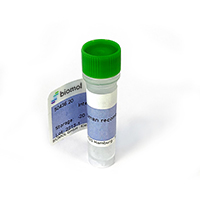Cookie preferences
This website uses cookies, which are necessary for the technical operation of the website and are always set. Other cookies, which increase the comfort when using this website, are used for direct advertising or to facilitate interaction with other websites and social networks, are only set with your consent.
Configuration
Technically required
These cookies are necessary for the basic functions of the shop.
"Allow all cookies" cookie
"Decline all cookies" cookie
CSRF token
Cookie preferences
Currency change
Customer-specific caching
FACT-Finder tracking
Individual prices
Selected shop
Session
Comfort functions
These cookies are used to make the shopping experience even more appealing, for example for the recognition of the visitor.
Note
Show the facebook fanpage in the right blod sidebar
Statistics & Tracking
Affiliate program
Conversion and usertracking via Google Tag Manager
Track device being used

| Item number | Size | Datasheet | Manual | SDS | Delivery time | Quantity | Price |
|---|---|---|---|---|---|---|---|
| F4212-93.25 | 25 µg | - | - |
3 - 19 business days* |
771.00€
|
If you have any questions, please use our Contact Form.
You can also order by e-mail: info@biomol.com
Larger quantity required? Request bulk
You can also order by e-mail: info@biomol.com
Larger quantity required? Request bulk
Human FGF-21 Fibroblast growth factor 21 (FGF-21) is a member of the FGF gene family, which... more
Product information "Fibroblast growth factor 21 (FGF21), human recombinant (rHuFGF21)"
Human FGF-21 Fibroblast growth factor 21 (FGF-21) is a member of the FGF gene family, which currently contains 22 human members. Based on its structure, it is further classified as an FGF19 subfamily member. This subfamily includes FGF-19, -21, and -23. Like all other FGF subfamilies, FGF-19 subfamily members contain a 120 amino acid (aa) core FGF domain that exhibits a b-trefoil structure (1, 2). Unlike other FGF subfamilies, FGF-19 subfamily members apparently exhibit poor binding to ECM, resulting in highly diffusible molecules (3). The c-DNA for FGF-21 predicts a 209aa polypeptide that contains a 28aa signal sequence and a 181aa mature region (4). Notably, FGF-21, as well as FGF-19 shows limited binding to heparin (4). One potential alternate splice form has been reported. It shows a 43aa substitution for the C-terminal 12aa of the standard form (5). Mature human FGF-21 shows 81% aa identity to mouse FGF-21, and is known to be active on mouse cells (4, 6). The FGF-19 subfamily is considered endocrine in nature. All three subfamily members impact some aspect of metabolism, all three are induced by a nuclear receptor heterodimer that includes RXR, and all three utilize Klotho family members for signal transduction (7, 8, 9). FGF-21 is produced by hepatocytes in response to free fatty acid (FFA) stimulation of a PPARa/RXR dimeric complex. This situation occurs clinically during starvation, or following the ingestion of a high-fat/low-carbohydrate diet. Upon FGF-21 secretion, white adipose tissue is induced to release FFAs from triglyceride stores. Once FFAs reach hepatocytes, they are oxidized and reduced to acetyl-CoA. The acetyl-CoA is recombined into 4-carbon ketone bodies (acetoacetate and b-hydroxybutyrate), released, and transported to peripheral tissues for TCA processing and energy generation. Recombinant human FGF-21, derived from E. coli, consists of amino acids encompassing His29-Ser209, with an N-terminal 5-His tag (Accession #Q9NSA1). It has a predicted molecular mass of approximately 20.2kD. Biological Activity: Measured by its ability to stimulate the proliferation of BaF3 mouse pro-B cells transfected with human FGF RIIIc. The ED50 for this effect is typically 0.06-0.4ug/ml in the presence of rmKlotho-beta. Measured by its ability to stimulate the proliferation of NIH3T3 cells. The ED50 for this effect is typically 0.12-0.6ug/ml in the presence of 5ug/ml of rmKlotho-beta. Storage and Stability:, Lyophilized powder stored at -20°C is stable for 12 months after receipt. For maximum recovery of product, centrifuge the original vial after thawing and prior to removing the cap. Product reconstituted under sterile conditions is stable for 1 month at 4°C and for 3 months at -20°C to -70°C. Avoid freeze-thaw cycles.
| Keywords: | FGF21 |
| Supplier: | United States Biological |
| Supplier-Nr: | F4212-93 |
Properties
| Conjugate: | No |
| Host: | E.coli |
| Species reactivity: | human |
| Immunogen: | E. coli-derived recombinant human FGF-21. |
| Format: | Purified |
Database Information
| KEGG ID : | K22429 | Matching products |
| UniProt ID : | Q9NSA1 | Matching products |
| Gene ID | GeneID 26291 | Matching products |
Handling & Safety
| Storage: | -20°C |
| Shipping: | +4°C (International: +4°C) |
Caution
Our products are for laboratory research use only: Not for administration to humans!
Our products are for laboratory research use only: Not for administration to humans!
Information about the product reference will follow.
more
You will get a certificate here
Viewed







